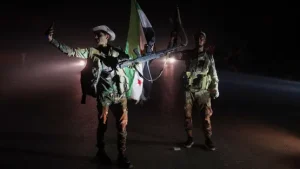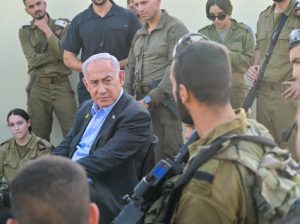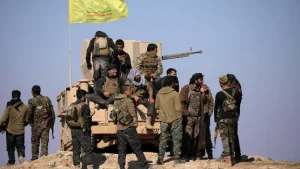Sending Popular Forces to Sweida: The rugged volcanic terrain of Sweida governorate in southern Syria has long stood apart. Home predominantly to the Druze community, a distinct ethno-religious group, Sweida maintained a precarious neutrality for much of Syria’s brutal conflict. While fiercely protective of its autonomy and deeply distrustful of both the Assad regime and Islamist rebels, it largely avoided the full-scale warfare that engulfed other regions. However, the summer of 2023 marked a dramatic shift.
Sending Popular Forces to Sweida: An Island of Relative Calm Under Pressure
An unprecedented wave of popular protests erupted, fueled by economic collapse and decades of simmering resentment, leading to the formation of local militias and bold demands for change.
Concurrently, unconfirmed reports swirled regarding the surrender of Hay’at Tahrir al-Sham (HTS) leader Abu Mohammad al-Jolani.
This article examines the profound significance of the Sending popular forces to Sweida movement, analyzes the dubious claims surrounding Jolani, and explores what these developments signal about Syria’s fractured and volatile future.
Sweida’s relative isolation during the war stemmed from several factors:
-
Druze Autonomy: The community possesses a strong sense of identity and self-reliance, with influential religious leadership (al-Mashaykha al-‘Aql) and traditional social structures. Historically, they prioritized self-preservation.
-
Distrust of All Sides: The Druze distrusted the Sunni-dominated opposition, fearing the rise of extremist groups like ISIS or HTS. Simultaneously, they harbored deep grievances against the Assad regime, particularly over decades of political marginalization, economic neglect, and compulsory military service that saw many Druze youth die fighting a war they didn’t believe in.
-
Regime Dependence (Reluctant): Damascus relied on Sweida’s quiet to secure a crucial flank near the Israeli-occupied Golan Heights and the Jordanian border. It maintained a security presence but granted the Druze significant de facto autonomy in local affairs to avoid provoking a rebellion.
This fragile equilibrium began to shatter as Syria’s economic crisis, exacerbated by war, sanctions, corruption, and the fallout from Lebanon’s collapse, reached catastrophic levels.
Hyperinflation rendered salaries worthless, fuel and basic goods became scarce and unaffordable, electricity was sporadic, and unemployment soared. Sweida, like the rest of Syria, was plunged into abject poverty.
The Spark: Economic Desperation Ignites Long-Simmering Fury
The catalyst came in August 2023. The regime’s announcement of sweeping cuts to long-standing fuel subsidies, effectively multiplying prices overnight, proved the final straw.
Decades of pent-up anger over corruption, neglect, repression, and the sacrifices imposed on the community erupted.
Mass protests, unprecedented in Sweida’s modern history, engulfed the governorate’s main city, also called Sweida, and spread to towns like Shahba, Salkhad, and Qanawat.
This was not an Islamist uprising nor a foreign-backed plot. It was a genuinely popular movement driven by:
-
Economic Survival: Demands centered on reversing subsidy cuts, increasing wages, combating corruption, and restoring basic services.
-
Political Change: Protesters openly called for the fall of the regime (“Down with Bashar al-Assad”), an end to Ba’ath Party rule, and the release of political prisoners. Slogans targeted the security apparatus and corruption.
-
Druze Dignity: There was a powerful undercurrent of reclaiming communal dignity and asserting rights after years of perceived humiliation and exploitation by Damascus.
The Rise of Popular Forces: “Men of Dignity” Take Shape
As protests intensified and distrust in regime security forces grew, the movement organically evolved. Building on existing local social structures and a history of community self-defense, protesters began forming organized, armed popular forces.
This process, intrinsically linked to the uprising, became known locally as Sending popular forces to Sweida, signifying the mobilization of the community to protect itself and assert its demands.
Key characteristics of these forces emerged:
-
Local & Grassroots: Primarily composed of local Druze youth, including civilians, defected soldiers, and members of existing informal groups. Leadership often emerged from respected local figures or families, not external commanders.
-
Defensive Mandate (Initially): Their primary stated role was protecting protesters from regime security forces (who occasionally used live ammunition and arrests) and preventing the regime from crushing the uprising as it had elsewhere. They set up checkpoints around protest sites and key entry points to Sweida city.
-
Symbolic Rejection of Regime Authority: Taking control of key buildings, including the local Ba’ath Party headquarters (which was torched) and governorate offices, became powerful symbols of rejecting Damascus’s rule. This act of Sending popular forces to Sweida to occupy regime institutions marked a point of no return.
-
Connection to Wider Druze Identity: The most prominent grouping adopted the name “Men of Dignity” (Rijal al-Karama), evoking a deep sense of Druze pride and history of resistance. They displayed Druze flags and religious symbols prominently.
-
Beyond Sectarianism (Rhetorically): While Druze-led and rooted in Druze areas, the movement and its forces actively sought to frame their struggle as a national Syrian one against tyranny and corruption, reaching out to other communities suffering under the regime. The act of Sending popular forces to Sweida was presented as part of a broader Syrian struggle.
The Sending popular forces to Sweida represented a significant escalation, transforming peaceful protests into an armed standoff with the potential for wider conflict. It was a direct challenge to the regime’s monopoly on force within the governorate.
Damascus’s Dilemma: Containment over Confrontation
The regime faced a serious challenge. Sweida’s strategic location, the concentrated nature of the Druze community (making collective punishment logistically easier but politically explosive), and the potential for the uprising to inspire similar movements elsewhere demanded caution. A full-scale military assault risked:
-
Uniting the Druze globally in outrage.
-
Alienating remaining Druze within the Syrian Army.
-
Destabilizing the sensitive southern front near Israel and Jordan.
-
Triggering international condemnation.
Instead, Damascus opted for a multi-pronged strategy:
-
Limited Security Pressure: Arrests of activists, intimidation, and occasional low-level violence, but avoiding a massive invasion that could martyr the movement. Security forces largely remained confined to their barracks within Sweida.
-
Propaganda & Smear Campaigns: State media and allies labeled the protesters as “saboteurs,” “foreign agents,” or manipulated by “external agendas.” They downplayed the genuine economic grievances.
-
Dialogue and Co-option Attempts: Sending delegations (often including Druze figures loyal to the regime) to negotiate, offering minor concessions on subsidies or services while refusing core political demands. Attempts to split the movement or co-opt local leaders.
-
Economic Suffocation: Maintaining the broader economic siege, hoping desperation would eventually fracture the resolve of the population and the popular forces.
-
Exploiting Sectarian Fears (Subtly): Whispering campaigns attempted to paint the movement as a threat to minorities elsewhere or linking it (without evidence) to Israel, trying to deter broader Syrian support. The regime sought to delegitimize the very concept of Sending popular forces to Sweida.
The Jolani “Surrender” Rumor: Smoke Without Fire?
Amidst the Sweida uprising, sensational but entirely unverified reports began circulating, primarily from pro-regime and Iranian-linked media outlets, claiming that Abu Mohammad al-Jolani, the leader of HTS in Idlib, had surrendered or was negotiating his surrender to Damascus or Moscow.
-
The Claims: Reports suggested Jolani, facing internal pressures, Turkish constraints, and the futility of his position, was seeking guarantees for himself and his family in exchange for handing over control of Idlib or facilitating a regime takeover. Some variants claimed he was already in Damascus or Russian custody.
-
The Sources: These reports originated almost exclusively from outlets known for regime propaganda (e.g., Al-Mayadeen, specific Syrian state TV commentators) or Iranian channels (e.g., Fars News). No credible independent sources, Western intelligence leaks, or even HTS defectors corroborated the claims.
-
The Timing: The rumors emerged conspicuously as the Sweida protests gained international attention. This led many analysts to view them as a deliberate distraction tactic by Damascus and its allies.
Why the Jolani Surrender Narrative is Highly Dubious:
-
Lack of Evidence: Zero concrete proof has emerged – no photos, credible witness accounts, or official statements from Damascus, Moscow, or even Ankara (which has significant leverage over Idlib).
-
HTS Denial: HTS immediately and forcefully denied the reports. Jolani himself appeared in a video message shortly after the rumors peaked, very much in Idlib and in command, mocking the claims.
-
Implausibility: Surrender would mean certain death or life imprisonment for Jolani, designated a terrorist by virtually everyone. His organization, while pressured, remains cohesive and militarily significant within Idlib. He has no safe exit route.
-
Regime Motive: Spreading such rumors serves Damascus perfectly:
-
Distraction: Diverts attention from the significant challenge in Sweida.
-
Propaganda Victory: Creates an illusion of impending total victory and regime strength.
-
Demoralizing Opposition: Attempts to sow discord and despair among all anti-regime forces, suggesting even the most hardened are giving up. This narrative implicitly contrasts with the defiance of Sending popular forces to Sweida.
-
Testing Reactions: Gauges internal and external responses to the idea of Idlib’s collapse.
-
-
Russian Motive: Similarly, Russia benefits from projecting an image of resolving the Idlib “problem” and strengthening its position as the indispensable power broker. The Sending popular forces to Sweida movement represented an unpredictable internal challenge, while the Idlib rumor offered a (false) sense of regime progress.
The Jolani surrender story appears to be a classic example of regime disinformation, weaponized to undermine genuine popular movements like the one in Sweida and project an image of inevitable regime triumph.
Sweida’s Significance: Beyond the Uprising
The Sending popular forces to Sweida movement transcends a local protest. It represents:
-
The Failure of “Reconciliation”: It exposes the hollowness of the regime’s narrative of restored stability and national unity. Deep-seated grievances remain unaddressed.
-
The Economic Time Bomb: It demonstrates that economic collapse, not just political oppression, can be the primary driver of mass unrest capable of challenging the regime even in previously quiet areas.
-
A New Model of Resistance?: The organic, locally rooted, and initially non-sectarian (in aspiration) nature of the Sweida uprising, crystallized in the Sending popular forces to Sweida, contrasts sharply with the Islamist-dominated or foreign-backed opposition of the past. It shows resistance can emerge from within communities the regime considered loyal or pacified. The act of Sending popular forces to Sweida was self-determined.
-
Regime Vulnerability: It highlights the regime’s military overstretch and political weakness. Damascus could not crush Sweida as it crushed Daraa or Ghouta, revealing its reliance on coercion being limited when faced with a determined, cohesive community in a strategic location.
-
The Enduring Power of Communal Solidarity: The Druze community’s cohesion was fundamental to the uprising’s initial resilience and the formation of the popular forces. The Sending popular forces to Sweida drew strength from deep communal bonds.
The Stalemate and the Future
As of mid-2025, Sweida remains in a tense stalemate:
-
The popular forces (“Men of Dignity” and others) maintain control over significant parts of Sweida city and the governorate, effectively governing those areas.
-
Protracts continue, albeit with fluctuating intensity, demanding political change and economic relief.
-
The regime maintains its security enclaves but avoids major military incursions.
-
Negotiations have stalled, with the regime unwilling to concede politically and the Sweida movement unwilling to disarm or abandon its core demands.
The Sending popular forces to Sweida movement has solidified into a lasting challenge. The future depends on several factors:
-
Economic Pressure: Can the population endure worsening poverty indefinitely?
-
Internal Cohesion: Can the popular forces and the broader movement maintain unity and discipline?
-
External Support: Will the movement garner any tangible support (diplomatic or otherwise) from regional or international actors?
-
Regime Calculations: Will Damascus eventually risk a military solution if it perceives the movement as an existential threat or if it gains sufficient backing from Russia/Iran?
-
Linkages: Could connections develop between Sweida’s movement and other pockets of dissent, like ongoing protests in Daraa or latent unrest elsewhere? The model of Sending popular forces to Sweida could inspire others.
Sweida’s Defiance and the Regime’s Illusions
The uprising in Sweida and the organic emergence of popular forces represent one of the most significant developments in Syria in recent years. It is a powerful testament to the failure of the Assad regime to address the root causes of the conflict or provide for its people.
The Sending popular forces to Sweida was a spontaneous act of communal self-defense and political assertion born of desperation and a demand for dignity.
Conversely, the rumors of Jolani’s surrender appear to be nothing more than a cynical propaganda ploy by a regime seeking to distract from its domestic vulnerabilities and project an illusion of strength it does not possess. While Idlib remains a complex problem, its resolution will not come through the surrender of its most notorious leader via unverified rumors.
Sweida stands as a stark reminder that Syria’s conflict is far from over. Stability cannot be built solely on repression and the silencing of guns. Real peace requires addressing the legitimate grievances of all Syrians, including those in communities long considered quiescent.
The Sending popular forces to Sweida movement is a cry for justice and change that echoes far beyond the volcanic hills of the south.
It embodies the enduring spirit of a people who, pushed to the brink, chose to stand up and defend their dignity, proving that even in the darkest corners of a fractured nation, the embers of resistance can still ignite.
Their struggle, marked by the tangible act of Sending popular forces to Sweida, continues, a persistent challenge to the narrative of enforced stability and a beacon, however fragile, of popular will against oppression.
source: raialkhalij



